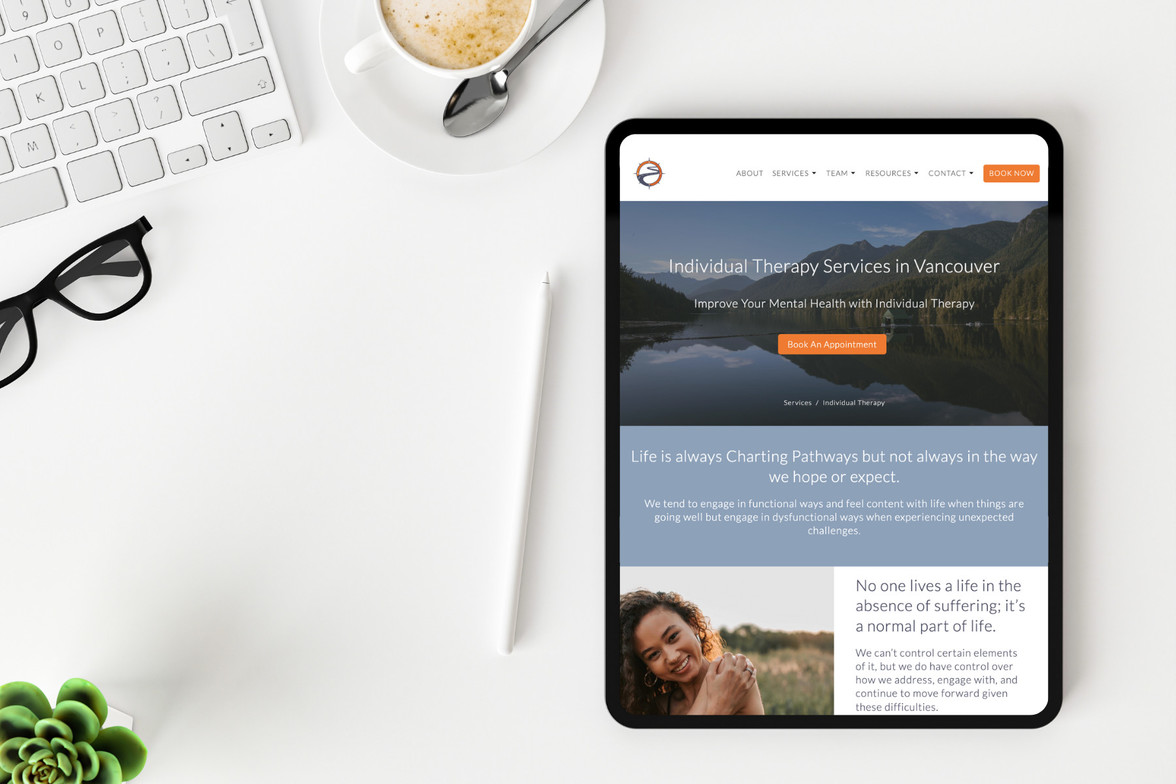
You don’t need to be a marketing expert to write a good blog post or high-converting page for your clinic—but there is one question you should always ask before you get started:
What is someone really hoping to find when they search for this topic?
That’s the key to writing content that actually works.
Because here’s the truth: Google isn’t just ranking pages based on keywords. It’s trying to match what people want. And if your blog (or any page on your website) lines up with that goal—if it gives people what they’re genuinely looking for—your chances of showing up in search results go way up.
This idea has a name in the SEO world: search intent.
Don’t worry, you don’t need to learn any complicated tech stuff. You just need to understand what your future patients are really searching for—and how to write content that speaks directly to them.
Let’s break it down.
The 3 Types of Search Intent You Should Know
1. Informational Intent – When People Are Just Looking for Answers
These are the folks who are curious, concerned, or doing research. They’re not ready to book an appointment just yet—they’re trying to understand something first.
What they might type into Google:
-
“How to relieve tension headaches”
-
“Why does my back hurt when I sit?”
-
“What does a chiropractor do?”
How to write for them:
Create blog posts and pages that genuinely help. Think of the kinds of questions your patients ask you every day, and turn those into posts. Write in a clear, friendly tone—just like you’d explain it to someone sitting in your waiting room.
These posts build trust, which matters. People are more likely to choose a provider they already feel connected to—and helpful, informative posts are a great first impression.
Tip: These kinds of posts also work great as evergreen pages on your site. If there’s a condition you treat often, it’s worth creating a dedicated page or resource, not just a blog.
2. Navigational Intent – When People Are Trying to Find You
This one’s easy to overlook, but it matters. Sometimes people already know your name—or at least part of it—and they’re trying to find your website, blog, or contact info.
What they might search:
-
“Golden Bear Chiropractic blog”
-
“Health First Chiropractic hours”
-
“Salt Light Wellness back pain tips”
How to write for them:
Make sure your blog and website mention your clinic name naturally. If you’re writing a post about posture, include a line like:
“At [Your Clinic Name], we help people in [Your City] improve their posture and reduce pain.”
Also: link to your main services, contact page, or booking form when it makes sense. Google uses all of this to connect the dots—and it helps people land where they need to.
Pro tip: If you’re creating a new service page or even an FAQ, the same principle applies. Use your clinic name, location, and service keywords throughout. It helps Google confirm that yes, you are the place people are looking for.
3. Transactional Intent – When People Are Ready to Book
These are your golden searches. Someone is in pain, they trust that your type of care can help, and now they’re looking for a provider.
What they might search:
-
“Chiropractor near me accepting new patients”
-
“Kelowna acupuncture appointments”
-
“Massage therapist open Saturday in Lehi”
How to write for them:
Create blog posts that make it easy to take action. Mention your services, hours, and location clearly. Include a call-to-action like “Book your first visit” or “Get a free consultation.”
A blog post titled “When to See a Chiropractor for Neck Pain” could end with:
“If neck pain is interfering with your daily life, don’t wait. Book an appointment with our team in [City]—we’re here to help.”
These kinds of posts often rank well because they match both the problem and the intent to act. Plus, even if they don't book right away, you’re planting a strong seed.
So... How Do You Know Which Type to Write?
Here’s a simple exercise before you write your next blog:
-
Pick a topic: “Knee pain when running”
-
Ask yourself: What is the searcher probably trying to do?
-
Learn about causes? (Informational)
-
Find a local provider? (Transactional)
-
Look up a specific clinic they heard about? (Navigational)
-
-
Write to meet that intent.
The clearer your match, the more likely Google will reward you—and real people will find your content helpful.
It’s like fitting someone with the right treatment plan. You can’t help if you don’t understand what they actually need first.
Don’t Forget Your Location!
This can’t be stressed enough: always include local details in your blog. People don’t just search for “physiotherapist”—they search for “physiotherapist in Vancouver BC.”
You don’t need to overdo it, but sprinkling in your city, neighborhood, or even landmarks nearby can help your posts get discovered by the right people—local people.
Blog Posts, Pages… It’s All About Matching Intent
While this post has focused on blog writing, the same principles apply to any page on your website—your homepage, service pages, and FAQs all benefit from clear, intent-matching content.
So whether you’re writing a quick article or building a new page, start with one question:
What is this person hoping to find, and how can I make that easier for them?
That’s what search engines are asking, too.
Need Help With Your Website's SEO?
We know that SEO can feel overwhelming—especially when you’re running a busy clinic. That’s where we come in.
At Clinic Sites, we help clinics like yours:
-
Achieve strong SEO health scores
-
Write content that people (and Google) love
-
Grow your online presence so that visitors turn into customers
Get SEO help today—so you can focus on care, not content.



